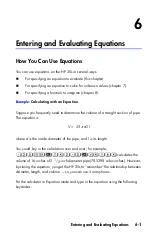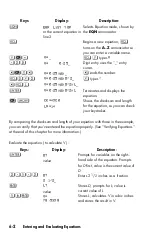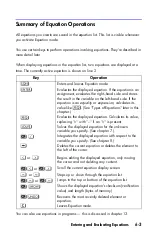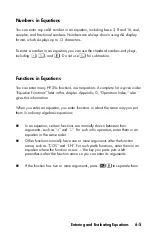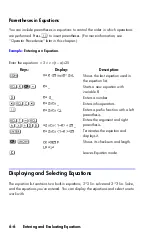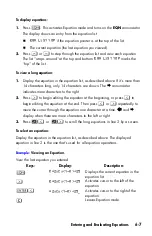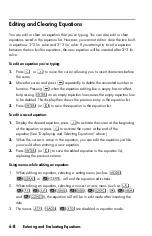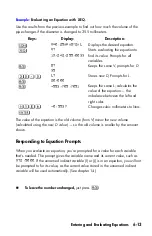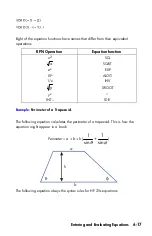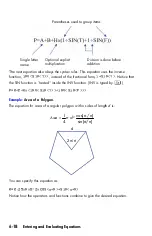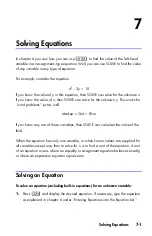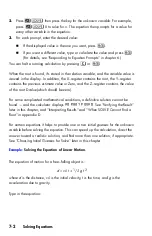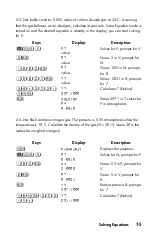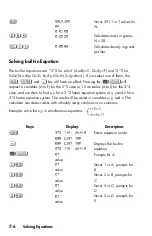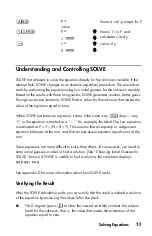
6-14
Entering and Evaluating Equations
To change the number,
type the new number and press
. This new
number writes over the old value in the X–register. You can enter a number as
a fraction if you want. If you need to calculate a number, use normal
keyboard calculations, then press
. For example, you can press 2
5
in RPN mode, or press 2
5
in ALG
mode. Before pressing
, the expression will display in line 2, and
after pressing
, the result of the expression will display in line 2.
To cancel the prompt,
press
. The current value for the variable remains in
the X–register and displays in right-side of the line two. If you press
during digit entry, it clears the number to zero. Press
again to cancel the
prompt.
To display digits hidden by the prompt,
press
.
In RPN mode,each prompt puts the variable value in the X–register and disables
stack lift. If you type a number at the prompt, it replaces the value in the X–register.
When you press
, stack lift is enabled, so the value is saved on the stack.
The Syntax of Equations
Equations follow certain conventions that determine how they're evaluated:
How operators interact.
What functions are valid in equations.
How equations are checked for syntax errors.
Operator Precedence
Operators in an equation are processed in a certain order that makes the
evaluation logical and predictable:
Summary of Contents for 35s
Page 1: ...HP 35s scientific calculator user s guide H Edition 1 HP part number F2215AA 90001 ...
Page 14: ...12 Contents ...
Page 15: ...Part 1 Basic Operation ...
Page 16: ......
Page 46: ...1 30 Getting Started ...
Page 63: ...RPN The Automatic Memory Stack 2 17 A Solution ...
Page 64: ...2 18 RPN The Automatic Memory Stack ...
Page 74: ...3 10 Storing Data into Variables ...
Page 180: ...12 14 Statistical Operations ...
Page 181: ...Part 2 Programming ...
Page 182: ......
Page 246: ...15 12 Solving and Integrating Programs ...
Page 270: ...16 24 Statistics Programs ...
Page 284: ...17 14 Miscellaneous Programs and Equations ...
Page 285: ...Part 3 Appendixes and Reference ...
Page 286: ......
Page 308: ...B 8 User Memory and the Stack ...
Page 322: ...C 14 ALG Summary ...
Page 336: ...D 14 More about Solving ...
Page 346: ...E 10 More about Integration ...
Page 352: ...F 6 Messages ...
Page 370: ...G 18 Operation Index ...
Page 382: ...Index 12 ...


